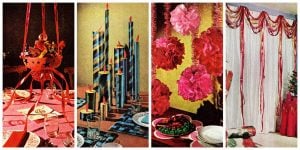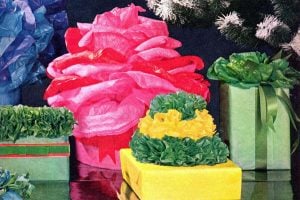Watch the iconic downtown Seattle skyline evolve over a century
Named for a Native leader named Si’ahl (Sealth) — also known as Chief Seattle — the city proper was founded in 1869. The sprawling metropolis now spans from the Pacific’s Puget Sound to Lake Washington.
As of the 2020s, nearly three-quarters of a million people call the Pacific Northwest city home. But of course, Native American tribes occupied the hilly area long before European immigrants traveled to the beautiful area via the historic Oregon Trail.
Strangely enough, the new settlers called the area “New York” at first, and later dubbed it “New York Alki,” for the Chinook word meaning “someday” or “by and by.”
Taking advantage of the large lumber trees and mild climate, the mills were what really grew the town at first — then fishing, shipbuilding, and shipping industries took over. When the Northern Pacific Railway skipped Seattle for Tacoma (home of the hometown airport known as SeaTac), the city leaders got the railroad to add a line to Seattle in 1884.
Shortly thereafter, disaster struck when the Great Seattle fire of 1889 destroyed more than 100 acres of downtown.

But from the ruins came new opportunities, since most of the city burned down. Combined with the gold rush in Canada’s Yukon Territory, Seattle managed to thrive.
The 1909 Alaska-Yukon-Pacific Exposition cemented Seattle’s climb to be the welcoming, innovative area it remains today.
It even was once home to the tallest building in the West — the LC Smith building, which opened in 1914 with 42 stories — a historic landmark now known as the Smith Tower.
Perhaps Seattle’s most iconic structure remains the Space Needle, which started as a doodle by hotel exec Edward E. Carlson. The imaginative tower became a reality, and opened in December 1961. The same man brought the 1962 World’s Fair to Seattle the following year (see more about that below).
Now, check out these vintage views of the downtown Seattle skyline to get a sense of how the city looked back from the 19th century through to the 21st!
A bird’s eye view of the city of Seattle, Puget Sound, Washington Territory (1878)


Bird’s eye view of the city of historic Seattle, Puget Sound, county seat of King County (1884)


Birds-eye-view of downtown Seattle and environs King County, Wash. (1891)


Seattle history: The harbor of Seattle, Washington (1800s)

Downtown Seattle and the LC Smith Building (c1914)

Old city view from the New Washington Hotel, a portion of the greater downtown Seattle skyline (1929)



DON’T MISS: ‘Here Come the Brides’ theme song, lyrics & what the actors thought of the show (1968-1970)
Four vintage postcards of downtown Seattle and the Seattle skyline in 1942




Downtown Seattle in the 1950s
Excerpted from House & Garden Magazine (August 1957)
Off in a beautiful corner of its own, Seattle nurtures a home-grown pride in its scenery, its talent for expressing a way of life with taste and freedom, its signs of cultural maturity, its bursting civic ambition
From the visitor’s point of view, the 600,000 or more citizens of Seattle, Washington, enjoy enviable status among the privileged of the world. Most of the 600,000 think so, too, for this city radiates a highly communicable euphoria.

For decades, after-dinner speakers have paid homage to the “spirit of Seattle,” and, while this oratorical cliche may set the local sophisticate’s teeth on edge, it does truthfully reflect a popular state of mind.
Although Seattle has passed its first century of life, it retains the characteristics of exuberant adolescence.
People settle in Seattle today for the same essential reason wagonloads of families risked the hazards of the Oregon Trail nearly a century ago. Now, as then, they are seeking a new pattern for their lives.
Finding nothing of Boston or Atlanta or Chicago in the fabric of this beautifully remote community, they add cultural threads of their own and do it without apology.
So it has been as the Scandinavians, the Germans, the Japanese, the Chinese and the garden variety of Americans arrived, each giving something of himself to create one of the country’s most refreshing societies. And their common bond is a pride in Seattle’s physical beauty, its self-confidence and its growing cultural awareness.
“Seattle,” a local newspaperman explained, “is the biggest booster town of all. If you have any doubts, ask a Boeing aircraft worker who left Nebraska six months ago how Omaha compares with Seattle. He’ll wonder how you ever thought up such a ridiculous question.
“You may have a sophisticated matron on Mercer Island speak with reverence of San Francisco, but she thinks of it as a nice place to visit. Where this town is concerned,” concluded the reporter, “the local people are single-minded. They nurture the illusion that Seattle stands apart, beyond comparison with any other place.”

Most Seattleites probably would agree with everything about this appraisal except its use of so indecorous a term as “booster.” There are, to be sure, professional boosters aplenty in Seattle, but they are merely selling what everyone else is delighted to give away.
MORE: How (and why) the Boeing 747 jumbo jet made history
Although the citizens could boast about the city’s high wages and short hours (traceable in large part to an ignominiously deflated local pasha named Dave Beck), its good schools and its mild climate, they usually don’t. They talk about the scenery.

To live in Seattle is to be a scenery addict, and it could scarcely be otherwise. All around exists a natural spectacle of such breadth and richness that the eye is powerless either to ignore or reject it.
In bright, cloudless weather — of which, lamentably, Seattle may be in short supply at any given moment — a person can stop whatever he is doing, look up and admire a mountain, a lake, a river, the harbor or simply a far-off hillside dotted with the houses of other Seattleites. Such is the city’s allure that the local semanticists have never been able to define it with a ringing, all-encompassing slogan.
To reassure the impatient, for instance, Seattle is called “The Fastest Growing City in the World — For Its Age;” to cosmopolites, it is the “Gateway to the Orient;” to seekers after a latter-day Promised Land, the city represents the pulsing heart of “God’s Country.” But the slogan most commonly subscribed to is simply “The Most Beautiful City in America.”
Downtown Seattle on the cover of Sunset magazine (May 1959)

Seattle history: Aurora Bridge, in Sunset magazine (1959)
Our camera is pointed down and west from the pedestrian walk on Seattle’s high-level Aurora Bridge. The poplar-lined waterway below is the westernmost segment of the busy on Seattle’s Ship Canal Lake Washington Ship Canal.
The low-level Fremont Bridge in the picture opens more than 50 times a day in summer for anything from sailboats to ocean freighters.

Seattle in the 50s – Lunch beside the fireboats (1959)

Seattle’s famous landmark, the Space Needle at the 1962 World’s Fair

The Century 21 Exposition (Seattle World’s Fair) 1962

View of downtown Seattle, Washington in 1967
ALSO SEE: The mystery of DB Cooper, the hijacker who got $200,000 then jumped from a jet (1971)

Aerial view of the downtown Seattle skyline in 1967

Photo courtesy Seattle Municipal Archives
Dusk view of the Seattle skyline in the 80s

Aerial view of the Seattle, Washington, skyline

Seattle, Washington, including the famous Space Needle (2018)

MORE: Vintage Portland, Oregon: See scenes from old Portland back in the ’30s & ’40s



















